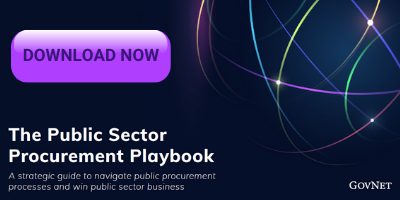How to Write an Effective Tender Response
Developing an effective tender response is challenging. It isn't just about being an expert on the services offered by either your business or industry, but it’s also a response that requires a multifaceted approach and various considerations. It’s one of the final and most important parts of winning government contracts, testing your team’s ability to analyse documents carefully and work collaboratively.
Creating an effective response involves a measured and analytical approach - so where do you begin? Here’s how to write a tender response.
- Analyse the Tender Document
- Clarify Anything That Remains Unclear
- Develop Concise, Comprehensive Answers
- Remember the Details
- Addressing the Selection Criteria
- Consider the Formatting
- Choose Your Referees
Analyse the Tender Document
While an obvious practice when responding to the invitation-to-tender (ITT), reading the document isn't the focus here; it’s how you read it.
A tender document is a set of rules, a fact sheet, a manifesto. While it covers many aspects, it has one interpretation: what the issuing organisation is looking for. Analysing the tender document properly, making sure you’re drafting a response that covers everything mentioned is crucial.
Inside the tender document, you’re likely to find:
- Key themes
- The priorities of the buyer
- Contextual issues
- Problems that need solving
A response needs to address each of these in full, with a great deal of attention paid to how your solutions accurately provide for the buyer’s needs.
Similarly, a tender document might even include stipulations on how to submit your response, involving deadline, formatting guidelines and word counts amongst other things. Essentially, the tender document is like a cheat sheet, telling you what to do. It’s up to your team to satisfy the buyer’s requirements.
Clarify Anything That Remains Unclear
While this occurs rarely, there may be some requirements you’re unsure about. It doesn't look bad if you have no recourse but to contact the buyer for clarification. It’s financially advantageous for the public sector organisation for bidding companies to receive as much information as possible to satisfy the contract's needs.
At this stage, consider:
- Nuances within the tender
- Elements of the specifications
- Eligibility to bid
You can also inquire about other bidders’ clarifications if any information is relevant to your tender response.
Develop Concise, Comprehensive Answers
Buyers aren’t looking for intricately-crafted novels about how you can meet their requirements. They want the answer and they want to see the answer offers them a solution at a good price.
Most tender documents include word limits, so work within that. If the limit is 500 words per question, make sure you’re writing 500 words - and squeeze as much value out as possible.
Similarly, avoid answers that are too short. Clarify doesn't mean writing one sentence. It means stating your arguments in the length needed to accurately convey a response while keeping within the limitations. Provide as much detail as possible and find a balance between too long and too short.
In terms of the language you use, it should be clear and simple. Writing overly descriptive or ‘flowery’ wastes time and space on the page. If the tender document allows, you should use visual data to back up any claims you make. This could be in the form of graphs, tables or images.
Remember the Details
Tender responses must include all relevant information required by the tender document. This may include:
- Company profile
- Price conditions
- Any intellectual property that might be relevant for inclusion
- Delivery details
- ABN
- Information regarding potential subcontractors
- Schedules, such as delivery dates or proposed milestones
- Any insurance considerations
Addressing the Selection Criteria
As we’ve stated, each tender document will include a complete list of selection criteria. You must respond to each in kind and include the added benefits a buyer will get within each criteria.
Providing specific examples is a good way of showing this. Past experience will stand you in good stead here, so include credentials and verifiable expertise where possible.
Overall, you need to identify the most important thing for the buyer and then construct the tender response around resolving those needs.
Consider the Formatting
You should format all tender responses under any formatting requirements. They should also have a consistent design, font and font size.
Not only does this simply make it easier to read, but it also looks professional, making a good first impression. The tender response should look polished. If graphs and images are allowed, make sure these are of consistently high quality, as poor images look unprofessional.
Some tender documents don’t provide information on formatting, meaning you must structure your document clearly, in a well-organised manner. It should include a persuasive introduction detailing your central proposition. It must also accurately develop a narrative throughout, providing a compelling case for why your organisation is the most economically advantageous choice for satisfying the contract.
Choose Your Referees
Referees can make or break a tender response. While you might need specific permission to use them, referees are always worth including.
Brief them on the tender document’s key themes so they can adequately tailor their comments to suit the requirements. While this is a detailed list, it’s by no means exhaustive. Each bidding process will be unique, requiring different considerations and expertise.
The Public Procurement Playbook
Want to learn more about the public sector procurement process and win more public sector business? Download the Public Procurement Playbook.
Topics Covered Include:
- Public Procurement Trends & Stats
- How to Target and Find Contracts
- Improving Sales Potential & Outreach Tips
- Tips for Winning Contracts
- Managing the Bid Process
- Links to Other Useful Resources



